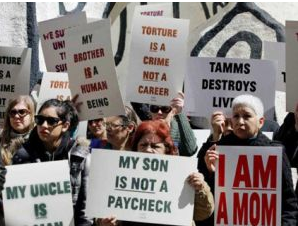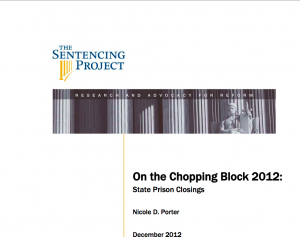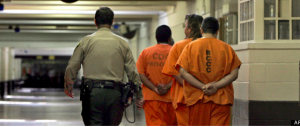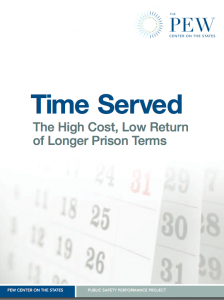March 4,2013
 An article in the Patriot Post, reports that “the state [Pennsylvania] is scrapping all contracts with the private companies that run 38 community corrections centers – better known as half-way houses – requiring them to rebid and making the new contracts performance-based. Pennsylvania is reacting to statistics showing that people who go through half-way houses are actually more likely to return to prison than people paroled directly to the street.
An article in the Patriot Post, reports that “the state [Pennsylvania] is scrapping all contracts with the private companies that run 38 community corrections centers – better known as half-way houses – requiring them to rebid and making the new contracts performance-based. Pennsylvania is reacting to statistics showing that people who go through half-way houses are actually more likely to return to prison than people paroled directly to the street.
At first, it appears a reasonable plan, but there are concerns that need to be addressed. One issue relates to the nature of different prolee populations in half-way houses. Those with a high risk assessment may do poorly, as will drug addicts vs. those who are only drug abusers. Furthermore, it makes sense that those who are under greater observation in a half-way house will be found in violation of their parole at a greater rate than those who are under minimal supervision. These are realities that one would expect the governor’s office to understand.
And then there are the intangibles.. The proposed program intends to include the number of arrests during and after half-way house residence, rather than relying heavily upon returns to prison. In some communities, this plan would give the police license to close down half way houses at will (and possibly return parolees to prison). In my experience as a Reentry Court Judge in San Francisco, I fould that parolees were arrested more frequently than parolees in any other California county. Upon looking into the matter further, it was obvious that San Francisco parolees were an easy arrest target for police (a parolee with a search clause). Living in a twenty block area known as the Tenderloin, all parolees lived in a ghetto of drug addicts, the mentally ill, those on probation or their Own Recognizance, the old and infirm, and their predators. In a high income city’s ghetto, with little opportunity to live elsewhere, it was nearly impossible for parolees to live a healthy,drug and crime free life. In 2010, the return to prison rate for non-reentry court parolees was approximately 78%. Making arrests of parolees in the Tenderloin was like shooting fish in a barrel.
Before instituting an incentive based half-wayhouse program, Pennsyvania may want to review the scientific literature on half-way houses. Those that are most successful have prepared the parolee for the transition to the community while still in prison, providing counseling, education, and job training, and importantly “cognitive behavioral therapies” (the only program dealing with criminogenic risk showing significant success).
People ultimately make a program successful or not. Half way houses often are poorly resourced, with staff who have little expertise or training for their positions. Additionally many states stuff hundreds of transitioning parolees into half-way houses with deplorable but expected results. New Jersey was rocked this past July by revelations in a Series in The New York Times, describing “escapes, drug use, lax security and violence — including sexual assaults — at facilities intended to transition individuals back into the community, often after serving jail time. The report said since 2005, there have been about 5,100 escapes from the state’s halfway houses, many run by Community Education Center”.( a predictable outcome where hundreds of offenders were in individual half-way houses, when what is needed is individual programs made up of a few dozen particpants at best, with a high ratio of workers to participants; to view comprehensive New York Times articles, click on photo on left.)
Since Pennsylvania is prepared to hold Half-Way Houses responsible for the arrests made after parolees leave the facility, one must consider what kind of follow-up the half-way house will have with the parolee. Will the parolee be required to attend aftercare sessions and remain in close contact with their half-way house counselors. Will they be assisted by the half-way house in guiding their reentry into society. And finally, what will be the nature of supervision to contain drug abuse and criminality. And as importantly, will the parolee be required to engage in pro-social activites, like school, job training, volunteer work, and other forms of community involvement. It was my experience that the court was an excellent means to institute a controlled return into the community. As the judge is universally acknowledged as a community leader, all intervenors seem to work well with the judge, even when they are reluctant to work with each other, encouraging a more collaborative, and comprehensive level of supervision and rehabilitation ofr the parolee in the community.













